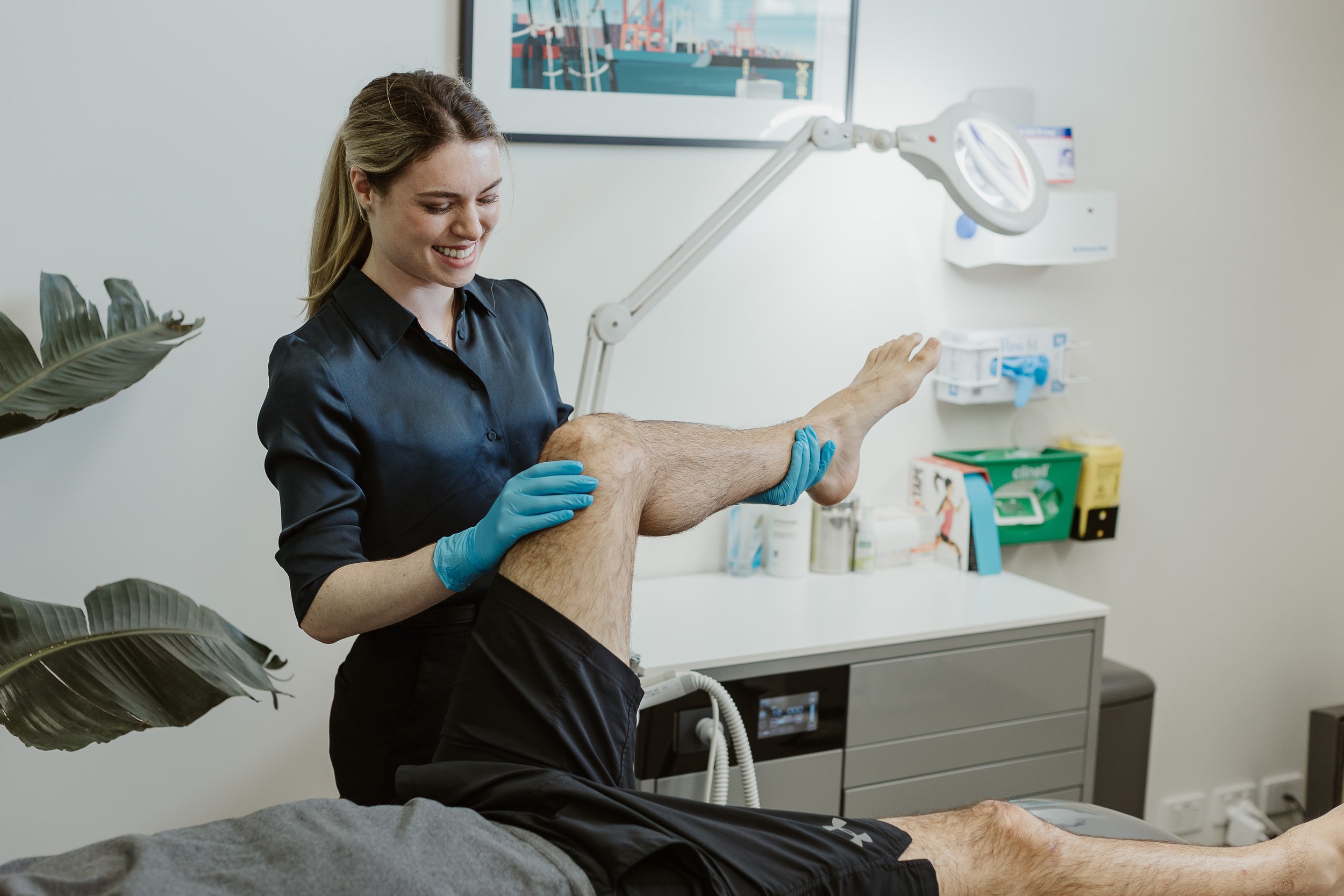Why I Should See My Podiatrist For a Biomechanical Assessment?
Runners and athletes rejoice! At JS Podiatry, we believe enhancing your lower limb biomechanics will improve your overall performance. No matter if you are a novice or an elite level athlete, we have got you covered.
What Is Involved In A Biomechanical Assessment?
Our biomechanical assessments generally begin with a non-weightbearing analysis of your lower limb. We assess leg length differences, painful structures, range of motion and muscle strength in your hips, knees, ankles, and feet.
After the non-weightbearing component is complete, we will do a weightbearing/standing assessment, which involves looking from head to toe at your posture and alignment. After performing a few tests including balance and strength tests, we will perform an in-depth standing, walking, and running analysis using our 3D video gait analysis technology.
3D Motion Analysis and Force Measurement Technology
The team at JS Podiatry would like to introduce you to our biomechanical analysis treadmill, called Zebris Cosmos! We are pleased to be one of the few clinics in Perth with this specialised pressure distribution treadmill, which uses high-speed cameras to provide accurate feedback on muscle weakness, walking and running anomalies, and biomechanical limitations.
The Zebris treadmill is able to assess your biomechanics when you are standing still, walking and running. It then provides a detailed report, which allows your podiatrist to create a personalised management plan. This report can include information such as pressure distribution of your feet, cadence (steps per minute), balance and stability, and step length.
At JS Podiatry, we pride ourselves on using high quality equipment and delivering the best care to our patients. We are passionate about sports podiatry and have been able to help athletes of all levels improve functionality.
How Can a Biomechanical Assessment Affect Performance?
Whether you are experiencing pain or discomfort in your feet, ankles, knees, and/or hips or would just like to maximise athletic performance, a lower limb biomechanical assessment is a powerful tool to improve overall foot and ankle function.
Your podiatrist will use all relevant information from the biomechanical assessment to develop a targeted management plan specifically for you. This could include a range of personalised interventions such as a custom orthotic prescription, and exercise, rehabilitative, injury management, or gait training programs. Having tailored treatment plans specifically for your injury or deficiency will speed up your recovery and provide you with confidence in our diagnosis.
When Should I Come In For My Biomechanical Assessment?
The best time to book in for your assessment is if you are experiencing pain or discomfort in your lower limbs, it is pre-season or the start of the season for your chosen sport, or you have a big game coming up and just want some reassurance everything is working at its optimal level!
All of our podiatrists at JS Podiatry are highly qualified to perform your biomechanical assessment! We look forward to helping you minimise your pain and maximise your performance.



